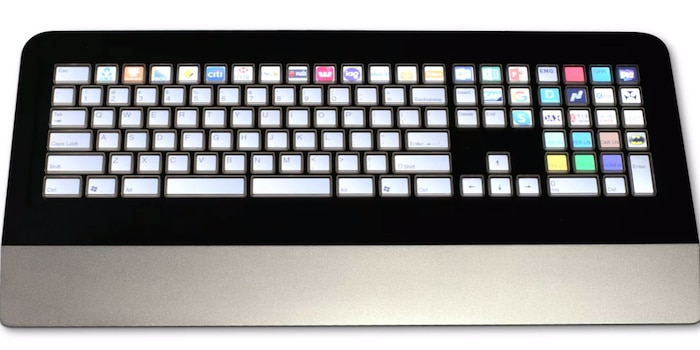
This keyboard is a tactile monitor
Keyboards have hardly changed since they were first used on PCs. The Australian company PKT wants to change this with the prototype of its Picture Keyboard.
The Picture Key Board - codenamed PKB 5000 - utilises Picture Key Technology (PKT) from PKT. According to the manufacturer, the keyboard combines the functions of a touchscreen with the haptic feedback of conventional mechanical keyboards. The interface is designed to allow a dynamic and customised arrangement of the keys, thereby saving time and costs and increasing efficiency.
What's behind it
The PKB 5000 utilises a single standard computer screen underneath the physical key arrangement. By using a special material called Bonded Fibre Optic Image Conduit (BFOIC), graphics on the screen are transferred into each key and displayed on its keycap. The graphics on each key can be changed by software.
The keyboard has 110 keys, all of which are freely programmable. This is nothing new. However, in addition to the action that is executed by pressing a key, you can also change the display image accordingly. This allows you to adapt the keyboard to specific workflows and change it as often as necessary. You get all conceivable keyboard layouts in one, so to speak.
The keyboard can also be programmed to follow a set process. The corresponding images or texts only appear until a certain workflow has been completed. This eliminates the need for tedious key combinations. The required keys can also be highlighted during the process, making input even more user-friendly.
PKT has already been offering this technology in broadcast, film and audio production for some time. With the PKB 5000, the company wants to address a broader market. The prototype is not the end of the story; PKT wants to commercialise the product. You can find the demo video here
From big data to big brother, Cyborgs to Sci-Fi. All aspects of technology and society fascinate me.
From the latest iPhone to the return of 80s fashion. The editorial team will help you make sense of it all.
Show all